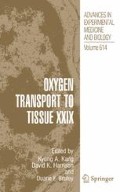Abstract
Authors contributed equally to this manuscript Natural adjuvants, such as bacterial lipopolysaccharide (LPS), activate antigen presenting cells via Toll-like receptors and, indirectly, increase the survival of antigenactivated T cells. The molecular mechanisms leading to increased survival remain poorly defined. Because T cell clonal expansion leads to high energy demands, we hypothesized that increased glucose uptake and/or utilization in adjuvant-activated T cells could be important molecular event(s) that would lead to adjuvant-associated T cell survival advantage. Using a fluorescent analog of 2-deoxyglucose, 2-NBDG, we measured glucose accumulation and rate of uptake in T cells from mice treated with antigen in the absence or presence of LPS. Although adjuvant activated T cells increased the accumulation of 2-NBDG, the rate of uptake was unchanged compared to cells activated with only antigen. Furthermore, glucose transport inhibitors, cytochalasin B or phloretin, decreased the accumulation of glucose in adjuvant- treated T cells, but this decrease did not impair adjuvant-associated survival advantages. Together, these data indicate that increased glucose uptake through glucose transporters is not required for increased survival of activated T cells.
Access this chapter
Tax calculation will be finalised at checkout
Purchases are for personal use only
Preview
Unable to display preview. Download preview PDF.
References
A.T. Vella, J.E. McCormack, P.S. Linsley, J.W. Kappler, and P. Marrack. “Lipopolysaccharide interferes with the induction of peripheral T cell death.” Immunity 2, no. 3(March 1995):261–70.
T. Mitchell, J. Kappler, and P. Marrack. “Bystander virus infection prolongs activated T cell survival.” J. Immunol. 162, no. 8 (April 1999):4527–35.
T.C. Mitchell, T.K. Teague, D.A. Hildeman, J. Bender, W.A. Rees, R.M. Kedl, B. Swanson, J.W. Kappler, and P. Marrack. “Stronger correlation of bcl-3 than bcl-2, bcl-xL, costimulation, or antioxidants with adjuvant-induced T cell survival.” Ann. N. Y. Acad. Sci. 975, (December 2002):114–31.
L.P. Kane and A. Weiss. “The PI-3 kinase/Akt pathway and T cell activation: pleiotropic pathways downstream of PIP3.” Immunol. Rev. 192, (April 2003):7–20.
F.V. Lali, J. Crawley, D.A. McCulloch, and B.M. Foxwell. “A late, prolonged activation of the phosphatidylinositol 3-kinase pathway is required for T cell proliferation.” J. Immunol. 172, no. 6 (March 2004):3527–34.
S. Sengupta, P.M. Chilton, and T.C. Mitchell. “Adjuvant-induced survival signaling in clonally expanded T cells is associated with transient increases in pAkt levels and sustained uptake of glucose.” Immunobiology 210, no. 9 (2005):647–59.
J.C. Rathmell, C.J. Fox, D.R. Plas, P.S. Hammerman, R.M. Cinalli, and C.B. Thompson. “Akt-directed glucose metabolism can prevent Bax conformation change and promote growth factor-independent survival.” Mol. Cell Biol. 23, no. 20 (October 2003):7315–28.
C.A. Doughty, B.F. Bleiman, D.J. Wagner, F.J. Dufort, J.M. Mataraza, M.F. Roberts, and T.C. Chiles. “Antigen receptor-mediated changes in glucose metabolism in B lymphocytes: role of phosphatidylinositol 3-kinase signaling in the glycolytic control of growth.” Blood 107, no. 11 (June 2006):4458–65.
K.A. Frauwirth and C.B. Thompson. “Regulation of T lymphocyte metabolism.” J. Immunol. 172, no. 8 (April 2004):4661–65.
B. Hellwig and H.G. Joost. “Differentiation of erythrocyte-(GLUT1), liver-(GLUT2), and adipocyte-type (GLUT4) glucose transporters by binding of the inhibitory ligands cytochalasin B, forskolin, dipyridamole, and isobutylmethylxanthine.” Mol. Pharmacol. 40, no. 3 (September 1991):383–89.
M. Kobori, H. Shinmoto, T. Tsushida, and K. Shinohara. “Phloretin-induced apoptosis in B16 melanoma 4A5 cells by inhibition of glucose transmembrane transport.” Cancer Lett 119, no. 2 (November 1997):207–12.
J.E. McCormack, J.E. Callahan, J. Kappler, and P.C. Marrack. “Profound deletion of mature T cells in vivo by chronic exposure to exogenous superantigen.” J. Immunol. 150, no. 9 (May 1993):3785–92.
A. Virkamaki, E. Rissanen, S. Hamalainen, T. Utriainen, and H. Y ki-Jarvinen. “Incorporation of [3-3H]glucose and 2-[1-14C]deoxyglucose into glycogen in heart and skeletal muscle in vivo: implications for the quantitation of tissue glucose uptake.” Diabetes 46, no. 7 (July 1997):1106–10.
K. Yoshioka, H. Takahashi, T. Homma, M. Saito, K.B. Oh, Y. Nemoto, and H. Matsuoka. “A novel fluorescent derivative of glucose applicable to the assessment of glucose uptake activity of Escherichia coli.” Biochim. Biophys Acta 1289, no. 1 (February 1996):5–9.
A. Ghosh, J. Maniloff, and D.A. Gerling. “Inhibition of mycoplasma cell division by cytochalasin B.” Cell 13, no. 1 (January 1978):57–64.
P.A. Theodoropoulos, A. Gravanis, A. Tsapara, A.N. Margioris, E. Papadogiorgaki, V. Galanopoulos, and C. Stournaras. “Cytochalasin B may shorten actin filaments by a mechanism independent of barbed end capping.” Biochem Pharmacol. 47, no. 10 (May 1994):1875–81.
J.F. Griffin, A.L. Rampal, and C.Y. Jung. “Inhibition of glucose transport in human erythrocytes by cytochalasins: A model based on diffraction studies.” Proc. Natl. Acad. Sci. U. S. A. 79, no. 12 (June 1982):3759–63.
R.M. Krupka. “Asymmetrical binding of phloretin to the glucose transport system of human erythrocytes.” J. Membr. Biol. 83, no. 1–2 (1985):71–80.
Author information
Authors and Affiliations
Editor information
Editors and Affiliations
Rights and permissions
Copyright information
© 2008 Springer Science+Business Media, LLC
About this paper
Cite this paper
Sengupta, S., Vitale, R.J., Chilton, P.M., Mitchell, T.C. (2008). Adjuvant Induced Glucose Uptake by Activated T Cells is not Correlated with Increased Survival. In: Kang, K.A., Harrison, D.K., Bruley, D.F. (eds) Oxygen Transport to Tissue XXIX. Advances In Experimental Medicine And Biology, vol 614. Springer, Boston, MA. https://doi.org/10.1007/978-0-387-74911-2_8
Download citation
DOI: https://doi.org/10.1007/978-0-387-74911-2_8
Publisher Name: Springer, Boston, MA
Print ISBN: 978-0-387-74910-5
Online ISBN: 978-0-387-74911-2
eBook Packages: Biomedical and Life SciencesBiomedical and Life Sciences (R0)

